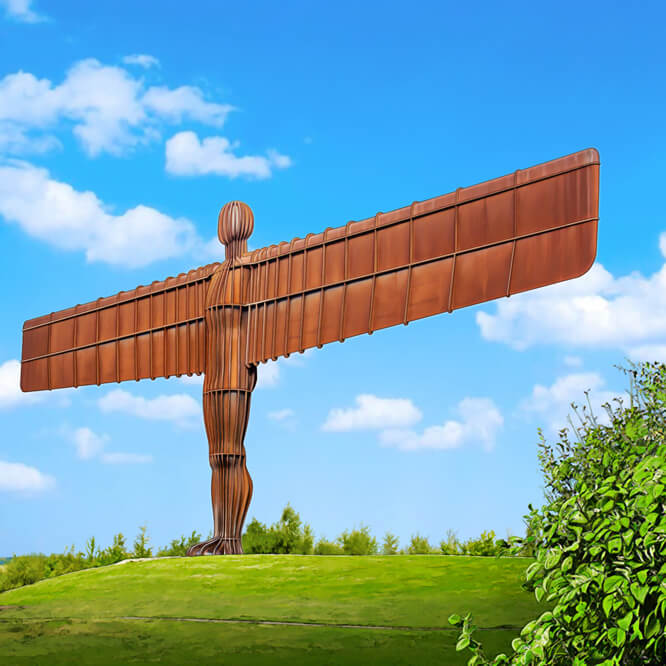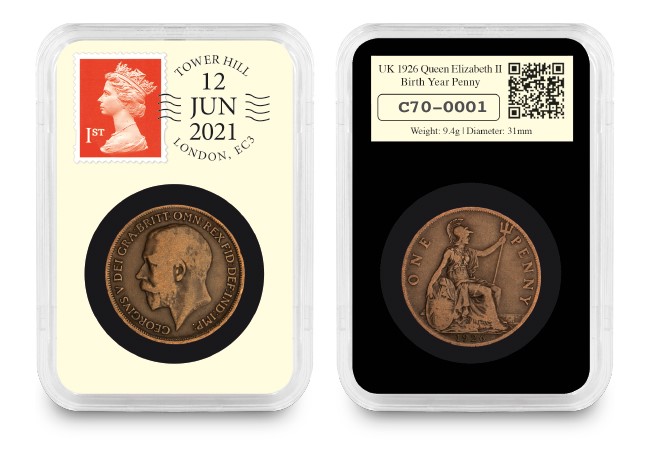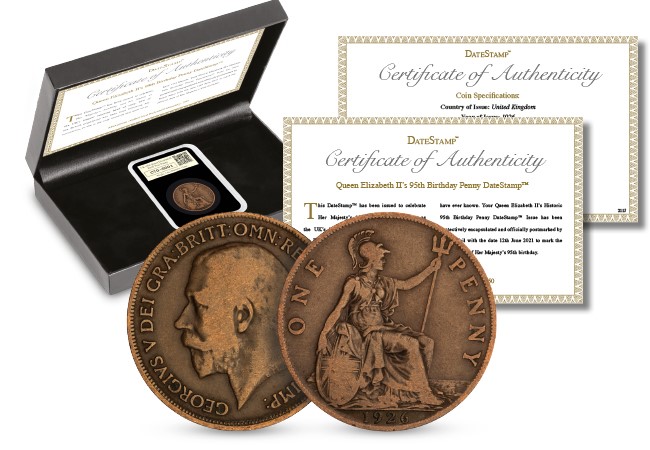Posts Tagged ‘Her Majesty the Queen’
Britain through the reign of Her Majesty Queen Elizabeth II: Part 4

The Land of Hope and Glory Collection tells the story of Britain through the reign of Her Majesty Queen Elizabeth II.
In the final instalment of the series, we will revisit some of the important events that have happened during Her Majesty’s reign in the past three decades.
Fire at Windsor Castle
On the 20th November, 1992 a terrible fire took place at Windsor Castle, the magnificent building Her Majesty the Queen calls home for most of her private weekends and one month a year over Easter.
Maintenance work was being carried out in the Castle at the time when a faulty spotlight overheated leading to it igniting. A nearby curtain took hold of the heat, lighting up in flames.
The fire spread dramatically.
Luckily, due to the work being carried out, much of the furniture which would have been near when the fire started, had already been removed to create space. This meant that a lot of possessions that would have been completely destroyed, were safely tucked away somewhere else.
Those working in the Castle, along with soldiers and members of the Royal family, all formed a human chain to pass items along out of the building. As such this meant that 300 clocks, historic manuscripts, thousands of valuable books, a forty-six-meter-long table, thirty-seven-meter-long carpet, and a collection of miniatures were all rescued.
Help quickly arrived and all together 1.5 million gallons (6,750 tons) of water from the mains water supply, a reservoir fire hydrant, a swimming pool, a pond, and the nearby River Thames were used to stop the fire.
After five years the Castle was returned to its former glory and remains open to the public throughout the year — continuing its 900 years of history today.
To find out more details of booking a visit to the Castle, click here >>
Channel Tunnel Opens
The American Society of Civil Engineers described this as one of the “seven wonders of the world” in 1996. Connecting Britain and the European mainland for the first time ever since the Ice Age, The Channel Tunnel reduced travel time between England and France to a mere thirty-five minutes. At the height of its construction fifteen thousand people were employed and eleven boring machines used. One boring machine is as long as two two football pitches, and all eleven together weighed an enormous twelve thousand tones.
Interestingly, one remains buried under the Channel and another was sold on eBay in 2004 for £39,999!
Her Majesty travelled from Waterloo to Calais on the 6th May, 1994 at a speed of 80 pmh. She joined President Mitterrand, who had travelled from Paris at 186 mph and together they officially opened the Channel, cutting red, white and blue ribbons to the sound of each’s national anthems.
The Angel of the North is constructed
Standing at an impressive sixty-five feet, the impressive Angel of the North is the height of four double decker buses!
In 1994, when winning artist Antony Gormley’s designs were revealed, the public were not too happy with the plans. Causing uproar, materials put forward were frowned upon, along with the size and magnitude of the sculpture in such an open and unlikely place.
However, many years on, those that live near have fallen in love with it. It has become a site of pleasure and this year celebrates its 24th birthday. Made from steel and a small amount of cooper, the Angel is meant to last for more than one hundred years. Coppers slows the erosion of the steel, and the materials together are quite malleable and can be easily manipulated into a variety of shapes and forms. The Angel of the North cost £800,000 to build and is seen by more than one person every second. It represents the history behind the site, societies future and our transition from the industrial age to the information age. An evolving sculpture to evolve with us.

The Millennium Fireworks
The millennium fireworks marked the movement into a new decade. Celebrations were held up and down the United Kingdom, with something for everyone to take part in, and crowds of more than two million took to London.
An incredible firework display took place by the River Thames. Outside of the UK, events were coordinated around the world to see in the new millennium, including an outdoor concert in Washington, United States.
On the Tower Bridge of London Her Majesty Queen Elizabeth II lit a laser which shot fire across the river to the national beacon. This beacon took hold of the fire, signalling the embrace of a new century. Soon after, beacons across the UK all became lit, uniting everyone across England, Wales, Scotland and Northern Ireland. Her Majesty also attended the Millennium Dome in Greenwich which held a special concert.

Birth of Prince George
In 2012, the Duke and Duchess of Cambridge announced that they were expecting their first child. This child would become third in line to the throne and would become a future monarch of the United Kingdom. On 22nd July 2013, Prince George was born at St Mary’s Hospital in Paddington.
Prior to his birth the Queen made some changes which impacted the Bill of Rights (1689) and the Act of Settlement (1701). A new Crown Act (2013) was brought into force which essentially put an end to a younger son displacing an elder daughter in the line of succession to the throne. Prince George is the first to have been born under this act. You can find out more about the line of succession here >>
As is tradition with any Royal birth, the announcement was placed on the easel outside Buckingham Palace. Along with this, many celebrated up and down the commonwealth countries, and certain water features across the globe were illuminated in blue.
This instalment marks the last in our Britain through the reign of Her Majesty Queen Elizabeth II blog series. We hope you have enjoyed travelling back with us through the different decades as much as we have.
If you’re interested…
The Land of Hope and Glory Collection celebrates Britain through the reign of Her Majesty Queen Elizabeth II. And today, you can start the collection of a Lifetime. Click here to secure the Coronation Medal for FREE >>
Revisit the historic moments that have shaped Britain through the reign of Queen Elizabeth II with our Land of Hope and Glory blog series:
Click here to read instalment 1 of the Land of Hope and Glory blog series >>
Click here to read instalment 2 of the Land of Hope and Glory blog series >>
Click here to read instalment 3 of the Land of Hope and Glory blog series >>
Britain through the reign of Her Majesty Queen Elizabeth II: Part 2

The Land of Hope and Glory Collection tells the story of Britain through the reign of Her Majesty Queen Elizabeth II. As Queen Elizabeth II’s Platinum Jubilee fast approaches, this blog series will revisit the historic moments during Her Majesty’s record-breaking reign that have helped define Great Britain. This week, let’s journey back to 1960s football, fashion and more.
Did you know that instant potato, the mash you buy pre-made at the supermarket, wasn’t a shop bought item until 1968? Angel Delight made its debut in 1967 and spreadable margarine wasn’t a thing before 1969!
Many do reminisce on the 60s as the time to be alive.
Swinging Sixties Fashion
In the early 60s, the emergence of supermodels like Twiggy and Jean Shrimpton redefined beauty and became true fashion icons. The latest clothing styles could be found in London Boutique shops. And whilst children began to practice with makeup on their dolls, teenagers discovered false eyelashes.
Inspiration came from the likes of the mods on scooters, skinheads, and hippies with their long flowing hairstyles.

Mary Quant, the queen of the miniskirt, had a boutique on Carnaby Street in London called Bazaar. She also released her own line of cosmetics in 1966. Many began to embrace their natural curves — new trends such as wearing trouser suits and miniskirts emerged.
England wins the FIFA World Cup
The TV audience in 1966 had to follow along the England match against Germany in black and white. However, for the first time they could see slow motion replays from the live match.
Multiple towns in England hosted games for the tournament, but the final was played at Wembley Stadium on the 30th July 1966.
Although the match didn’t get off to a good start and there were a few hiccups throughout, the team managed to bring home the first World Cup title for England.
Her Majesty the Queen and HRH Prince Philip were amongst the 93,000 spectators. The Queen then presented the trophy for the 1966 FIFA World Cup.
The shot by Geoff Hurst, which hit the crossbar and landed down near the goal line, was decided by the referee as a goal — which was highly contested at the time.
Years later, technology had advanced, and the ball was never over the line.
Beatlemania
The Beatles.
Need we say more?
Comprised of John Lennon, Paul McCartney, George Harrison and Ringo Starr, The Beatles were managed by Brian Epstein and signed by EMI on the Parlophone Label.
Did you know that they were originally turned down by Decca, the British record label?
Changing the pop music scene forever, Please Please Me was released January 12th 1963, and was an instant favourite among the public. They remained number 1 on the charts for 6 months with their first album, which was recorded in an entire 13-hour session.
First Flight of the Concorde
Concorde was the first successful civilian aeroplane to travel faster than the speed of sound.
Built jointly between Great Britain and France, it reduced the flight time between London and New York to roughly three hours.
Eventually flown worldwide, she first took to the skies on March 2nd 1969.
Sadly, in the end it was found the aeroplane had several problems such as noise and high expenses. However, it did unify the work of different countries, ensuring that Europe paved the way for aerospace development.
The Great Train Robbery
15 men and £2,600,000. What a heist that is.
Aided by two accomplices, these fifteen men managed to stop the Glasgow–London Royal Mail Train, steal over two and a half million pounds from the front two carriages, and transport the lot with their Land Rovers to a nearby hideaway, all without the staff in the remaining ten carriages even knowing a thing.
August 8th, 1963. The day they got lucky.
It was a bank holiday so the amount they stole was much larger than they had anticipated getting.
At their hideaway they noticed low flying RAF aircraft which they assumed were on the look-out for them. They in fact weren’t. But this spooked the robbers so much that they left and hired six thieves to burn the place down.
The poor job the thieves did left fingerprint marks on a Monopoly board and a ketchup bottle.
If you’re interested…
The Land of Hope and Glory Collection celebrates Britain through the reign of Her Majesty Queen Elizabeth II. And today, you can start the Collection of a Lifetime. Click here to secure the first Medal, featuring the Queen’s Coronation for FREE >>
If you haven’t read the first blog in the series, click here >>
Why the Queen’s birthday changes day every year…
Since 1952, the Queen has celebrated her official birthday on a different date each year. In fact, for the past five years alone she has celebrated her birthday on the 8th, 9th, 10th, 11th and 13th June, and next week she will celebrate her birthday on the 12th!
Now you’re probably wondering how this can be… and that’s because the Queen actually has two birthdays every year.
The first is on the actual day the Queen was born – 21st April 1926 – meaning that in April this year she marked her 95th birthday, although the celebrations were far more muted than normal.
Currently the reigning monarch’s second birthday is an official birthday on the second Saturday in June – a practice that dates back as far as 1748.
When King George II was the sovereign, the annual military procession (which later became the ‘Trooping the Colour’ parade) became synonymous with celebrating the monarch. However, King George II’s birthday was in October, and since good weather couldn’t be guaranteed for the annual parade in autumn, he decided to mark the date in the summer instead when there was a better chance of good weather.
And so, the tradition to celebrate the monarch’s birthday in the summer stuck, and each summer the Queen gets the chance to celebrate her birthday again!
This year 12th June will mark a particularly special birthday for the Queen. Turning 95 is a milestone achievement – less than 1% of the population reach this impressive age, so it’s no wonder that the Queen’s June birthday is set to be an important moment for the country and collectors alike.
And with the Queen’s 95th birthday being such a milestone achievement, many commemoratives were issued to mark the occasion in April. Since then we have seen repeated sell-outs.
But there’s one commemorative that has been issued specifically to mark the Queen’s official birthday that only 750 collectors will have the chance to own.

The Queen’s Official 95th Birthday Penny DateStampTM is set to be released on the 12th June. Most notably, this commemorative contains an original penny struck in 1926, the year the Queen was born. Each one has been individually capsulated and postmarked with the Queen’s official 95th birthday – 12th June 2021. What’s more, the one day only postmark ensures that the edition limit is guaranteed and that no more can ever be produced.
With such a limited number available, this DateStampTM issue is sure to be another sell-out as collectors aim to pay tribute to the Queen’s milestone birthday and her longevity. You can be one of them today by clicking the link below.
If you’re interested:
You can pay tribute to our longest reigning monarch by pre-ordering the Queen’s Official 95th Birthday Penny DateStampTM here. Only 750 will ever be issued, so you’ll need to be quick.



